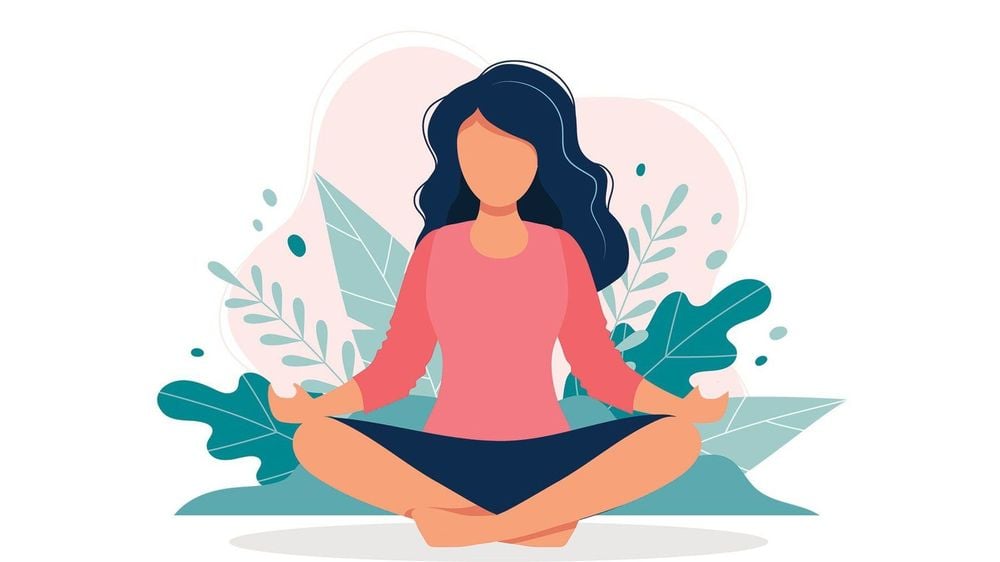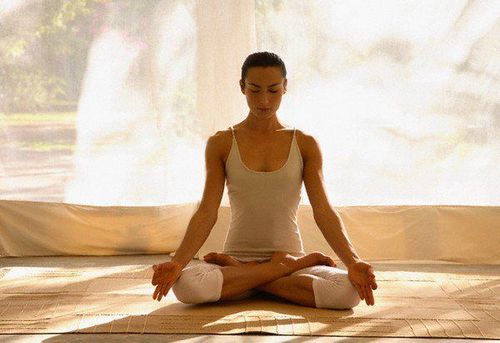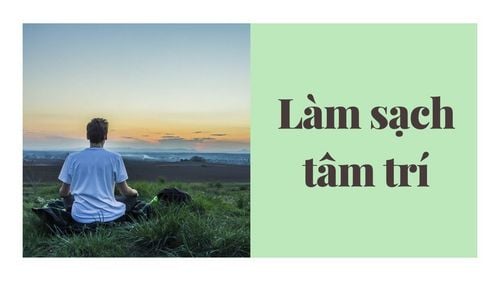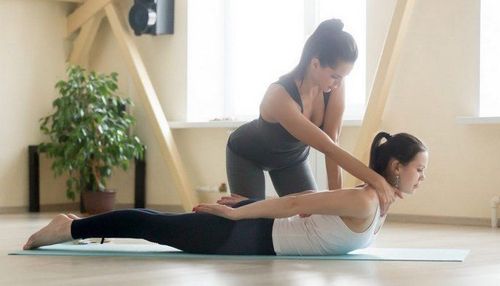This is an automatically translated article.
When you're looking to improve your athletic skills there are physical exercises to increase endurance and improve strength and speed. Practicing them regularly will help you get better at sports, pastimes and enjoying life. Similarly, there are many benefits to adding meditation and mindfulness exercises to your daily or weekly routine. Read on to learn more about mindfulness exercises that are good for your mind and body.After all, meditation is simply an exercise to cultivate mindfulness. The more time we spend sitting with our minds, the more comfortable we feel within ourselves. And, when we do weightlifting exercises to develop our biceps or quads, there are meditation exercises we can do throughout the day to strengthen our “mindfulness muscles.” The more we can add awareness to our day, the calmer, clearer, and more content we will feel. For beginners or anyone new to meditation, guided mindfulness exercises are a good choice because they provide instruction, encouragement, and support.
1. Mindfulness activities for adults
One of the most popular and well-known mindfulness activities is meditation. Although it may seem mystical and not easy to approach, meditation can actually be very simple. These exercises aim to turn everyday experiences into moments of mindfulness.1.1. Walking meditation Walking meditation, also known as walking or brisk walking, is exactly what one hears it: a form of meditation that the practitioner practices while walking, usually in a straight line or in circles. . Meditators can do it almost anywhere, whether they're walking to work, walking around the neighborhood, or hanging out with their kids at the park.
1.2. Meditating while driving If you're driving, you can engage in meditation by focusing on the weight of the vehicle below, the texture of the road you're driving, the sound of tires on the rocks. gravel, even the shape and feel of the seats relative to the rear of the car. You can then send the information you receive out to scan the environment and recognize not only other vehicles, lights, and pedestrians, but also terrain, foliage, and the horizon. With practice, you can even become a better driver. Keep your phone on silent, turn off the music and fully concentrate while driving.
1.3. Simple Mindfulness As the name suggests, this is a very simple method of mindfulness. The performer just needs to focus on what he is doing. If you're working on a computer, focus on one task at a time. If you may not want to, close all browser tabs that are not related to the work you are doing. This can help free up mental space and can even create significant focus. For more in-depth practice, focus on:
How we are breathing Our bodies feel when sitting in a chair or the feeling of our feet touching the floor if standing The feeling of the air or clothing on our body our skin Body structure and posture 1.4. Eating mindfully Eating mindfully is one way to turn something one does every day into a form of mindfulness practice. We can help ourselves focus more on our meals with some basic mindful eating practices, such as listening to the sound of food being cooked and chewing slowly to savor every bite. Other mindful eating tips meditators can try:
Try eating with your non-dominant hand. Eat the first few minutes of your meal in silence and focus on the taste, aroma, and texture of the food. Need to turn off the TV and put the phone away while eating. 1.5. Mindfulness While Gardening Gardening is a great way to practice mindfulness and at the same time connect with nature. Set yourself a simple task, such as planting a few seeds or watering a few flowers. As we do so, put our hands on the ground and feel its texture. Is it raw or good? Is it wet or dry? Is it warm or cool? Allow yourself to enjoy the process as if you were a child playing. Notice the weather - not through your mind, but through your senses. Do you get goosebumps from the cold in the air, or the sweat on your forehead from the heat? Notice any other life forms around you, such as a small dog or chirping birds. You might even notice a little bit of worms or earthworms.

Một số bài tập chánh niệm thông dụng như: Thiền hành, ăn trong chánh niệm,...
2. Mindfulness activities for kids
The best way to introduce mindfulness to children is to make it a game. That is exactly what the activities below do.2.1. Mindfulness engages all 5 of the child's senses Most children enjoy these games because they are specifically designed to encourage alertness by engaging all the senses. All you need to do is provide a safe environment for your child to explore freely. Here are the steps for your child to follow:
Listen. Name something children hear when they hear with their ears. Look. Name something that catches your child's attention when he looks around. Odor. Name scents your child notices when they smell them through their noses. Touch. Name objects your child likes to feel with their hands. If you want an extra sense of taste, simply offer a few snacks that are kid-friendly and ask them to name flavors they like, like sweet, savory, or sour.
2.2. Monkey see, monkey do This is a great mindfulness game to help kids increase body awareness and thinking about how they move through space. As an adult, take on the role of the monkey and lead the child through different positions. Try to shift your weight in undesirable ways, such as standing on one leg, walking on all fours, or raising one foot in the air. Ask the children how it feels to be in each position. Is it difficult to balance, or does it make them elongate?
Let the child move freely, only follow and really interfere in his performance when dangerous situations arise. You can even ask the kids to notice how their breathing changes when they laugh.
2.3. Dragon's Breath Dragon's breath is a fun way to help your child practice slow, deep breathing. The simple version doesn't require any ingredients, but you can put together a fun craft to really take the lesson home with. To maximize fun, you can read or create a short story about dragons to spark everyone's imagination. Some good choices are “Dragons with wisdom”, “Have a dragon in your book” and “Train your dragon”.
The simplest way to do this is:
Instruct the children to take deep breaths, so that the air is full in the abdomen and chest. When they're ready, instruct the child to "breathe fire" with a long, slow exhale. If you have paper on hand, it will be interesting to watch the paper blow as the kids exhale. Just instruct the child to hold it about 10cm from their mouth and let go as they exhale. 2.4. Blowing Bubbles Blowing bubbles is a classic activity for kids and they are a great mindfulness practice. First, ask the children to reflect on what they are thinking or feeling. You can remind them by giving examples like “I feel tired” or “I want to have lunch”. Show off your blowing bubbles and put your thoughts and feelings inside them. For example, “I feel nervous. I'll put that feeling in the bubble and let it go. "
Pointing out our thoughts and feelings are like bubbles: They come and go in the wind. Sometimes they even pop. This exercise can be especially helpful for thinking children. or uncomfortable feelings they need help letting go of.

Bài tập chánh niệm sẽ có hiệu quả với trẻ nếu bạn biến nó thành trò chơi
If the children can write, ask them to label the cards (if not, you can label them). Punch the cards and tie them together with a string. Children can use cards whenever they feel upset, angry, scared or upset to help them regulate their emotions and feel better.
3. Mindfulness for teenagers
Many people think that adolescents are very difficult to influence with mindfulness meditation. Fortunately, many teens have hobbies that can help them access mindfulness in a meaningful way.3.1. Enjoying Music Music can be a great step into the world of mind for teenagers. To practice, teenagers simply put on their favorite music and a space where they can't be interrupted. Ideally, the music would be something they haven't heard too many times before. Headphones can also come in handy in this case. Let them choose their own reasonable length song. Then they just need to get comfortable and get into the music.
3.2. Mental activity Mind movement is a great way for teenagers to loosen up, release pent-up energy, and allow for self-expression. It's another way to incorporate mindfulness using music, which means it may have particular appeal to teenagers.
Mind movement involves moving the body to the beat of the music without thinking about performing dance steps or looks. It's simply an interpretation of free music. There is no one correct way to do this. It simply expresses the emotions of the music.
3.3. Bracelets Handshakes are another fun way to combine movement and mindfulness that doesn't even require music. These are also known as stress and trauma relief exercises.

Thưởng thức âm nhạc cũng là bài tập chánh niệm hiệu quả
Jigsaw Puzzles Sudoku Crosswords Find the Missing Words Find the Differences Between Pictures Quiz Teens may enjoy puzzles and not even realize they are practicing mindfulness simultaneous.
3.5. Install the app There are a lot of smartphone apps out there that guide us in mindfulness meditation for different ages. Just install it and follow the instructions if you really feel like mindfulness meditation.
Mindfulness activities can be related to almost everything we do in our daily lives. It is not meant to be separate from reality, but to be an integral and enriching part of each of our life activities. Try to do these mindfulness activities to help yourself feel relaxed, calm, and to provide a strong connection to the world around you.
Please dial HOTLINE for more information or register for an appointment HERE. Download MyVinmec app to make appointments faster and to manage your bookings easily.
References: mayoclinic.org, headspace.com, healthline.com












